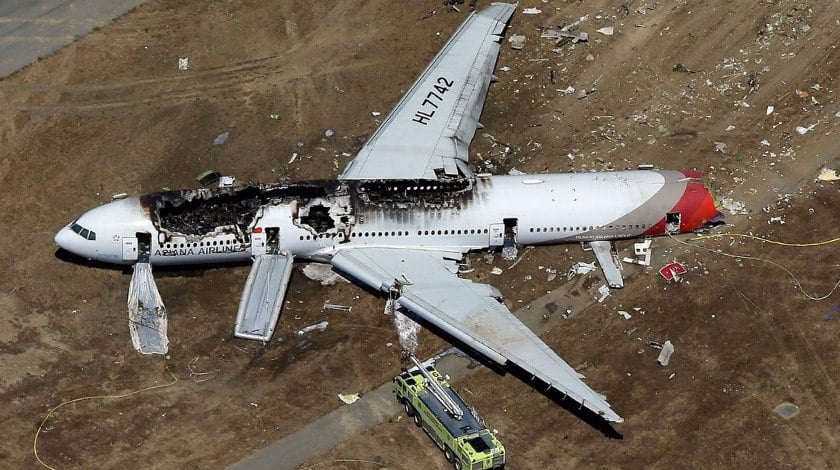Photo: lf-bc.com
Reading Time: 3 minutesThe year 2016 was marked by the record-high number of aviation accidents in the past 25 years across the 12 CIS states which are party to the Civil Aviation and Airspace Use Treaty.
The statistics are contained in a report issued by the Interstate Aviation Committee (CIS), which oversees the use and management of civil aviation in the former Soviet republics (for the exception of the three Baltic states). The IAC investigated 63 aviation accidents in 2016, or 12.5% up from 56 the year before.
Last year’s total accidents included 28 fatal ones, in which a combined total of 74 people were killed. This is one fatal accident more than in 2015, when the combined total of lives lost stood at 116.
The grim statistics were mainly down to an increase in the number of investigations related to commercial aviation: 28 total accidents were registered in this segment last year, against 19 in 2015. There were 11 fatal accidents compared to eight the year before; the number of fatalities stood at 44 against 70 in 2015. Based on these figures, the IAC concludes that “the trend towards an improvement in flight safety in commercial aviation observed in the previous years was interrupted” in 2016.
Just like in the previous two years, there were no fatal accidents involved heavy passenger aircraft in 2016. Nevertheless, the relative number of total accidents involving heavy passenger and cargo airliners has been growing steadily over the past three years.
The general aviation (GA) sector, for its part, saw the number of total accidents decline from 36 to 35 year-on-year; the number of fatal accidents stood at 17, with 30 fatalities (against 19 and 46, respectively, in 2015).
Russia led the CIS in the number of total accidents: 52, including 23 fatal ones with 59 persons killed. The 2015 figures had been 41, 20, and 60, respectively. There were four total accidents and seven fatalities in Kazakhstan, unchanged from 2015, but the number of fatal accidents grew from two to three.
Ukraine improved on its flight safety figures: four accidents without fatalities were investigated in the country, against six in 2015 (including three fatal accidents with 12 fatalities). A single fatal accident claimed one life in Belarus, against two accidents (including a fatal one with two fatalities) the year before.
The 2016 statistics include Azerbaijan with a single fatal accident, which claimed seven lives, as well as Armenia with a single non-fatal accident; neither country saw any accidents in 2015. Unlike in 2015, the IAC report does not mention Moldova, Tajikistan, and Kyrgyzstan.
The number of accidents involving light and ultralight aircraft more than doubled year-on-year, from five to 11; these involved seven fatal accidents (against two in 2015, indicating an increase of 3.5 times), which claimed more lives than the year before. The number of accidents involving helicopters stood virtually unchanged, but the number of fatal ones decreased.
Based on these figures, the IAC concludes that in 2016, “the relative total and fatal accident rate in the civil aviation sector across the CIS, both including and excluding GA, was the worst for the period between 2012 and 2016”.
The same goes for the number of total and fatal accidents per 100,000 hours flown by all civil aircraft in the CIS. According to preliminary estimates, human factor played a role in around 94% of all the 2016 accidents.
The CIS has analyzed the conclusions and recommendations made in the course of 2016 and earlier aviation accident investigations, and issued 23 recommendations for operators. The primary recommendations are to “ensure continuous monitoring of how flight safety-related decisions and measures are being implemented”, and also to “perfect the system of mandatory prompt action on recommendations issued by boards of inquiry, with said recommendations to be implemented in the form of specific action plans with controlled deadlines”.
An earlier IATA flight safety report reads that, although not a single jet-powered aircraft was involved in a hull loss accident across the CIS in 2016, the average annual CIS-wide jet hull loss rate of 2.28 between 2011 and 2015 was the worst in the world.
The CIS led the world in turboprop hull losses in 2015, with 10.03 airframes written off or destroyed. To compare, Asia-Pacific came second with 1.88 turboprop hull losses. The average annual CIS-wide figure for this category stood at 9.23 hulls in 2011-15, the second worst result after Africa with 10.51 hull losses.

